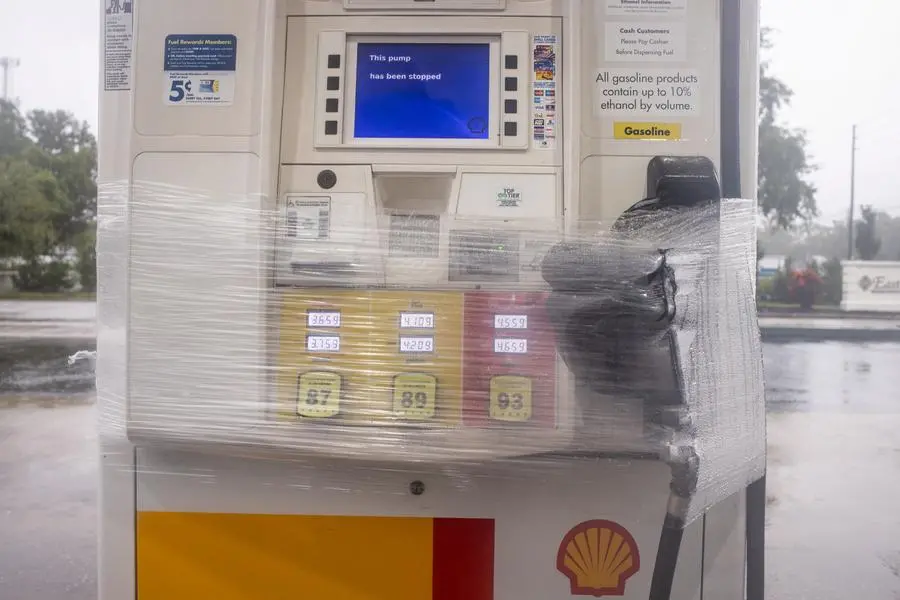PHOTO
(The opinions expressed here are those of the author, a columnist for Reuters.)
LITTLETON, Colorado - Fossil fuels continue to rule the roost in the United States' power sector, despite clean energy sources being rolled out at the fastest pace in history.
For the past decade, U.S. power generators have prioritized clean power sources over fossil fuels, and since 2014 they have lifted clean electricity generation capacity by over 70% while cutting fossil-fired capacity by 5%, according to Ember.
Even so, fossil fuels remain the dominant source of national power, accounting for just over 58% of total generation over the first eight months of 2024, according to LSEG.
That share is down from 60.4% during the same months in 2021, and reflects ongoing efforts to lift generation from clean energy as part of net zero emissions targets.
Yet in terms of absolute generation, output from fossil fuels has hit new heights this year, in response to steadily rising total energy demand that is placing strain on power systems across the country.
To keep pace with that rapid demand growth - fuelled in part by data centers and artificial intelligence applications - power firms have been forced to lift generation from fossil fuels alongside clean energy sources, despite pledges to cut reliance on fossil fuels over the longer run.
Only once clean generation capacity exceeds fossil capacity, and is complemented by a vastly larger battery storage network than is currently in place, may power generators be able to make material cuts to fossil generation.
STAYING POWER
Total U.S. power generation from fossil fuels over the first eight months of 2024 was 68.6 million megawatt hours (MWh), which was up 2.8% from a year ago and the highest since at least 2021, according to LSEG.
Natural gas-fired plants supplied the lion's share, generating 49.3 million MWh. That total was up 5% from the January to August window of 2023, and the highest on record.
Coal-fired output was down 2.3% from the year before at 19.1 million MWh, marking the third consecutive contraction in coal use during the January to August window.
Oil-fired production was 179,368 MWh, a new low for the period.
The steady reductions in coal and oil-fired generation are in keeping with industry efforts to cut use of high-polluting fuels.
Emissions per unit of electricity generated by gas-fired plants are the lowest among all fossil fuels, and roughly 77% lower than from coal-fired generation, data from Ember shows.
So far in 2024, around 537,000 metric tons of carbon dioxide (CO2) was emitted for every terawatt hour (TWh) of electricity produced from gas-fired power stations.
That compares to around 950,000 tons of CO2 per TWh from coal plants, and 700,000 tons from oil-fired plants.
CLEAN LIMITATIONS
Emissions from clean energy sources per TWh of electricity average around 21,500 tons of CO2, or 25 times less than from gas-fired power plants.
That sharply lower emissions profile is a major reason why power firms and government authorities are supporting clean energy uptake within U.S. power generation.
Nuclear reactors are the largest source of clean U.S. power, accounting for around 18.6% of total generation over the first eight months of 2024.
Wind farms (10.7%), hydro dams (6.4%) and solar farms (5%) are the other major forms of clean generation.
Yet clean power sources have their limitations at current capacity levels.
Nuclear plants offer the most robust source of around-the-clock clean energy, but have fallen out of favor due to high construction costs, years-long development times and tough regulations on waste handling.
Hydro dams have a similarly long build-out phase, are only suited to certain geographies, and face fervent environmental opposition in many locations.
Wind and solar farms have proven to be quicker and cheaper to build than other power sources, but have their own shortcomings.
Onshore wind farm construction costs have soared since 2020 due to labor and parts inflation, and often need to clear local community objections before getting the go-ahead. Offshore projects have similar hurdles but with even higher price tags.
Solar parks are the quickest and cheapest to bring to fruition, but can only produce power during daylight and so require back-up supplies whenever solar output slumps.
In the U.S., utilities that are on the hook to ensure steady power availability regardless of the time of day currently depend on fossil fuels to meet the bulk of demand, and to plug any supply gaps during windless and sunless periods.
Many utilities are currently building battery networks that can store surplus clean power for later use, and offer a path to lower fossil fuel reliance in the long run.
But current installed battery capacity is only around 21,000 megawatts, which is less than 2% of total installed generation capacity, according to energy data platform Cleanview.
That means batteries can currently only deploy a tiny fraction of national power needs.
Until batteries can reliably deploy a far larger share of generation capacity, power firms may have no choice but continue to rely on fossil fuels for a majority of power generation, even as they bring on further clean capacity.
(Reporting by Gavin Maguire; Editing by Jamie Freed)























